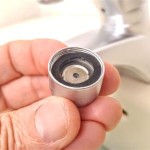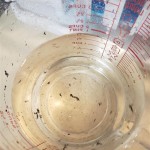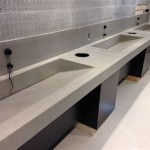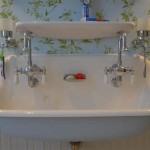How to Get Rid of Little Brown Bugs in the Bathroom
Tiny brown bugs in the bathroom can be a source of annoyance and worry. They can range from harmless but unsightly, to potentially harmful carriers of diseases. Finding the right solution to eliminate these little invaders requires understanding the source of the problem and employing targeted strategies. This article will explore common types of bathroom bugs, their causes, and effective methods for eliminating them.
Identifying the Culprits
Before tackling the infestation, it's essential to identify the specific type of bug you're dealing with. Common bathroom invaders include:
- Carpet Beetles: These small, oval-shaped insects are often brown and feature distinctive patterns. They feed on natural fibers like carpets, rugs, and clothing, but can also be found in bathrooms where they feed on shed skin and hair.
- Silverfish: These wingless insects are long and slender with a silvery-grey appearance. They prefer damp environments and feed on paper, starch, and other organic matter, making bathrooms a desirable habitat.
- Booklice: Also known as "psocids," these tiny insects resemble lice and are often found in groups. They feed on mold, mildew, and other organic matter found in humid areas like bathrooms.
- Springtails: These tiny, jumping insects are often brown or black and prefer damp environments. They feed on organic matter and can be found in bathrooms, especially in areas with cracks or crevices.
Addressing the Root Cause
Once you've identified the culprit, understanding the factors attracting them to your bathroom is crucial. Common causes include:
- Moisture: Excessive humidity can create an ideal breeding ground for many bathroom bugs. Leaky pipes, inadequate ventilation, condensation from hot showers, and standing water in sinks or tubs can all contribute to moisture buildup.
- Food Sources: Many bathroom bugs feed on organic matter like hair, skin, and even mold and mildew. These attractants should be minimized to deter infestations.
- Warmth: Bathrooms are often warm and humid, providing a comfortable environment for bugs to thrive. This is especially true in poorly ventilated spaces.
Elimination Strategies
Tackling a bathroom bug infestation requires a multi-pronged approach that addresses both the immediate problem and prevents future infestations. Here are some effective strategies:
1. Environmental Control
- Reduce Humidity: Fix leaky pipes, ensure proper ventilation with exhaust fans, and use a dehumidifier if necessary. Regularly clean up spills and standing water to prevent moisture accumulation.
- Limit Food Sources: Regularly clean up hair and skin debris. Thoroughly scrub the bathroom, paying particular attention to corners and crevices where bugs might hide. Keep towels and other linens clean and dry.
- Seal Entry Points: Caulk cracks and gaps in walls, windows, and doors to prevent bugs from entering the bathroom.
2. Natural Remedies
- Diatomaceous Earth: This non-toxic powder is effective against many insects. Sprinkle it in areas where you've seen bugs, paying attention to corners, baseboards, and cracks. The sharp edges of the powder dehydrate and kill the bugs.
- Essential Oils: Certain essential oils like peppermint, tea tree, and eucalyptus have insect-repelling properties. Dilute a few drops in water and spray it around the bathroom, paying attention to areas where bugs are frequently seen. Remember to test a small area first to ensure the oil doesn't damage your bathroom surfaces.
3. Chemical Treatments
- Insecticides: Use insecticidal sprays or foggers specifically designed for bathroom bugs. Follow instructions carefully and always wear protective gear when applying insecticides. Ensure proper ventilation during and after application. Remember, insecticides should be a last resort and used only after exploring safer methods.
- Insect Traps: Glue traps can be effective for capturing small insects. Place them strategically in areas where bugs are frequently seen. These traps can help monitor the infestation and indicate whether your control measures are effective.
It's important to note that some bathroom bugs can be resistant to conventional pesticides. If the infestation persists, it's best to consult a pest control professional for advice and specialized solutions. They can accurately identify the specific species of bug and recommend the most effective and safe treatment options.

4 Tiny Bugs In Shower Grout And Bathroom How To Get Rid Of Them

Identify Tiny Bugs In Bathroom And Get Rid Of Them For Good

Identify Tiny Bugs In Bathroom And Get Rid Of Them For Good

What Are These Tiny Brown Crawling Bugs In My Bathroom Apartment Lease Phoenix Area Arizona Az City Data Forum

Bathroom Bugs Identification Guide How To Get Rid Of Each Type A Z Animals

Bathroom Bugs Identification Guide How To Get Rid Of Each Type A Z Animals

How To Get Rid Of Booklice Fantastic Pest Control

Get Rid Of Bathroom Bugs Professional Pest Control Services Northern Aai

Advice Identify Small Brown Beetles Kiwicare

4 Tiny Bugs In Shower Grout And Bathroom How To Get Rid Of Them
Related Posts







